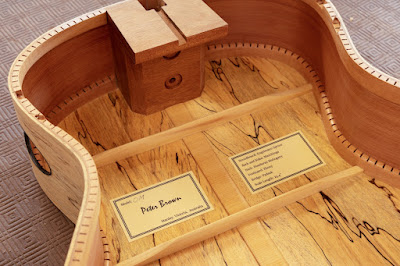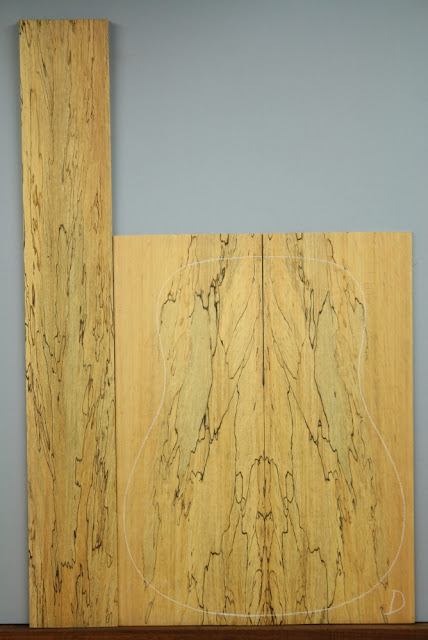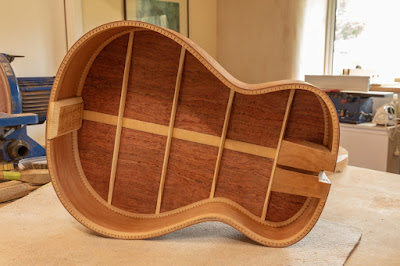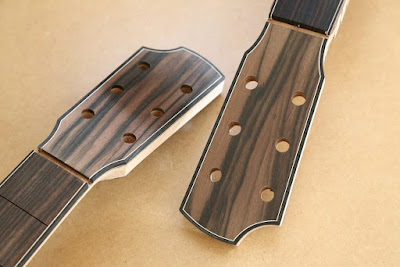It's a fact of life that events and circumstances can conspire to delay and reshape our plans, and this has certainly been the case where the instrument pictured is concerned.
Given that building guitars is such as passion for me, it's amazing - and even a little embarrassing! - to reflect on the fact that I began this guitar around twelve years ago. With a busy life that revolved around a nine to five job, time to pursue hobbies was in short supply all those years ago, and progress was understandably slow.
In part because of that situation, recalibrating the balance between work and play became a priority for my partner and for me, and we finally made the momentous decision to relocate, with a view to escaping the pace and pressures of city life, reducing our working hours and living expenses in the process.
After the stress and upheaval of an interstate move, we found ourselves renting a tiny cottage in a small village three hours' drive from Melbourne. While we were happy with our decision, and overjoyed to have made the move, other than for a brief period when I had access to a vacant shop a few hundred metres from home I was without a space in which to work, and guitar building was unavoidably put on hold.
We eventually persuaded our landlord to sell us the house, at which point reality set in: after seeking several quotes from local builders, I had to acknowledge that the cost of having a suitable workshop built to my specifications was prohibitive given our severely reduced income. Building with straw bales had captured my imagination several years earlier, however, and, even for someone like me with no prior building experience, building a straw bale workshop seemed achievable and much more affordable given that I'd complete the bulk of the work myself. Fast forward nearly four years, and my workshop was finally completed - previous blog posts show progress.
With that mammoth building project behind me, pent-up enthusiasm and my typical lack of discipline resulted in me commencing a number of new instruments, and it's only now that I begin the homeward run towards stringing this particular guitar up, hopefully within the next few weeks. Assuming, of course, that life events and circumstances allow it!
Cheers, Pete





















































